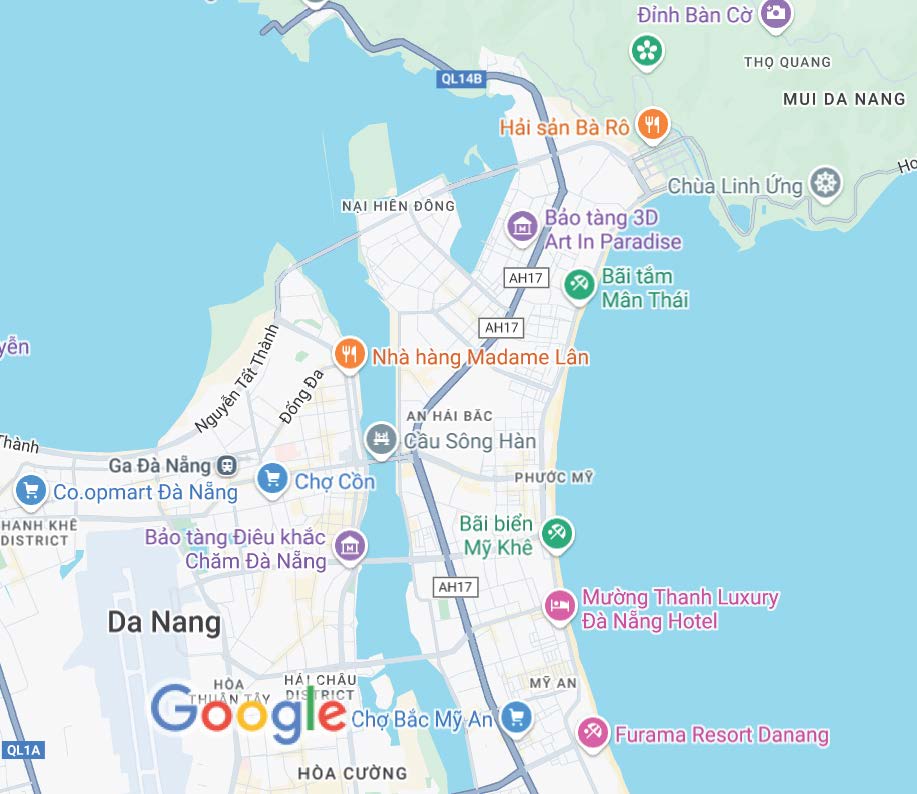
Da Nang would fit in just fine anywhere along the east or west coast of the United States.
For lack of a better description, the peninsular / eastern side of the city is easy to adapt to as a westerner. It has a very modern feel. A long, wide sandy beach (with a place that sells really good mango smoothies). High rise apartments, condominiums, and hotels. Lots of them. Tons of seafood restaurants. Tacky tourist areas. Ample convenience stores. Lot of traffic. Stephanie called the area Vietnam light.
The area of Da Nang west of the river is more typically Vietnam, whatever that means. Narrower streets. Local markets and stores. More traffic. Less western, less modern. More chaos. More Hanoi.
We are here for a week and plan to do nothing. Okay, we’ll go to the beach (an easy 10 minute walk away from our hotel), find a decent grocery store, and eat dinner out. That’s about it.
At this point we have pretty much abandoned all pretense of eating Asian food. We still do, but not nearly as often. In Thailand we ate Thai food about 80% of the time. In Laos, we had local food about 50% of the time. Thailand and Laos both had local options that we liked to eat. Now we’re probably having Vietnamese food 20% of the time, and even that is difficult.
Da Nang has ample food options for the non-Asian inclined eater. We’ve had good tacos, burgers, and pizza.
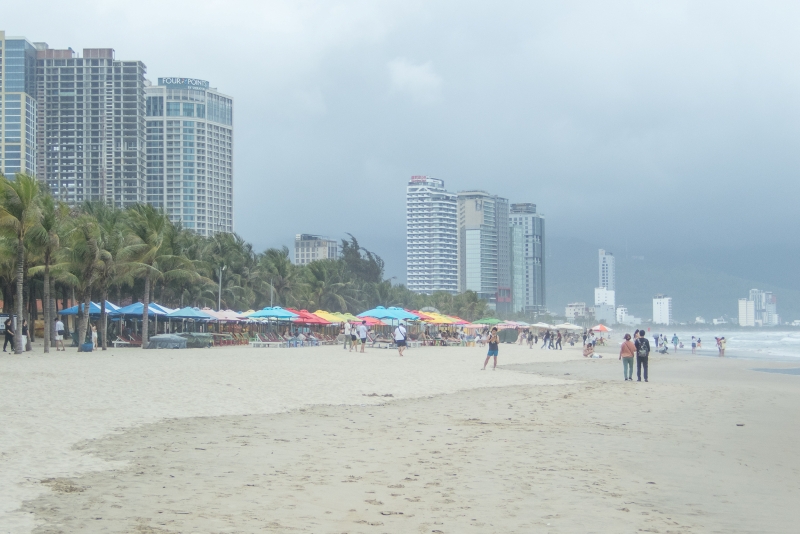
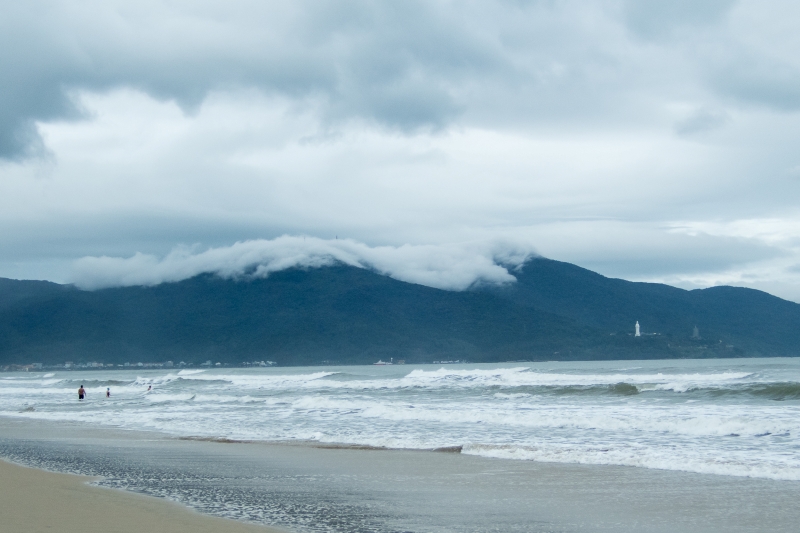
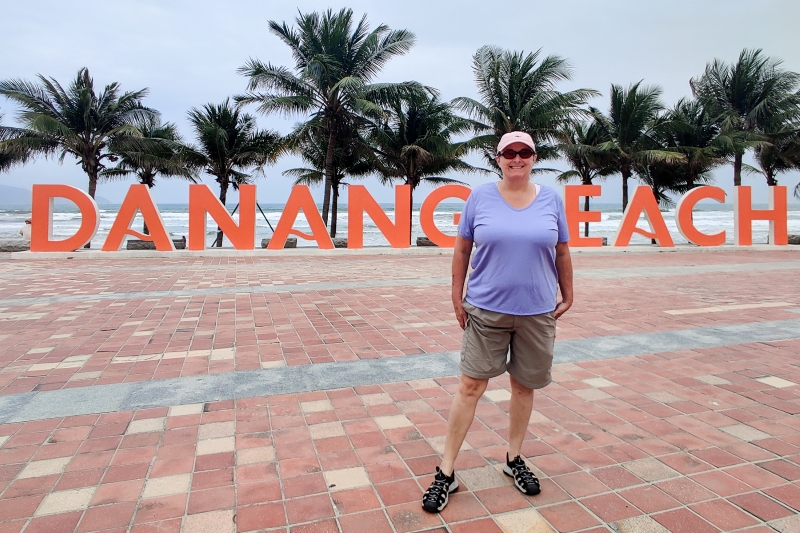
There are several major tourist attractions in and around Da Nang. Perhaps the most well known is the Dragon Bridge show (Friday, Saturday, and Sunday nights). Colored lights rotate to change the bridge different colors. At 9:00 PM the 15 minute show starts. For the first half, the dragon breathes fire every couple of minutes. During the second half, it spews water (a lot of water) every few minutes. If you are on or near the bridge, plan on getting soaked.
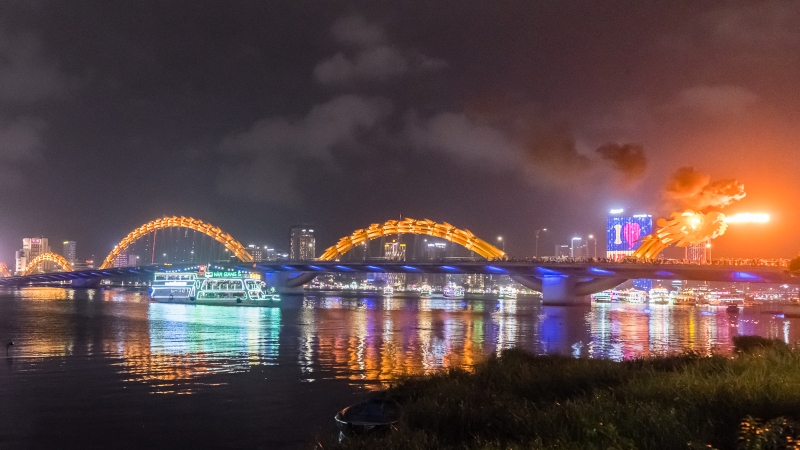
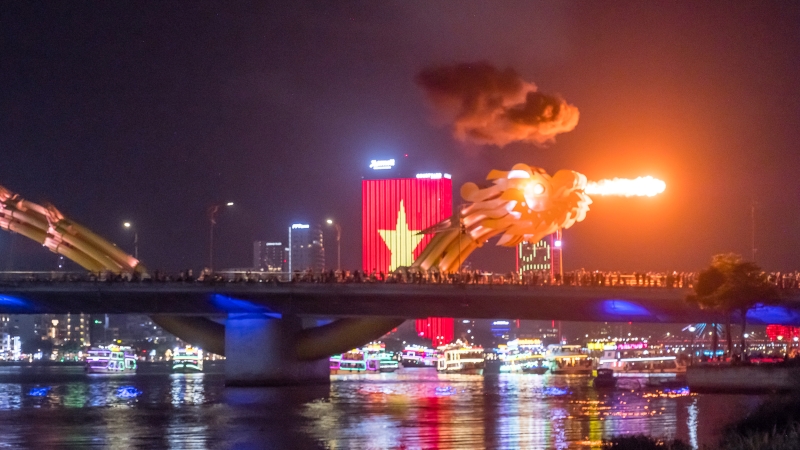
Along the sidewalk south of the dragon’s head (on Đ. Trần Hưng Đạo street), enterprising individuals set up tables and chairs, with the cost of a drink (a can of beer is only 25,000 ₫, or $1) being the seat fee. We walked a fair distance away from the dragon’s head to get a good view of the entire bridge for the show.
Stephanie was content to pay for a beer. I sat on the wall rather than in a plastic chair and avoided buying a drink:
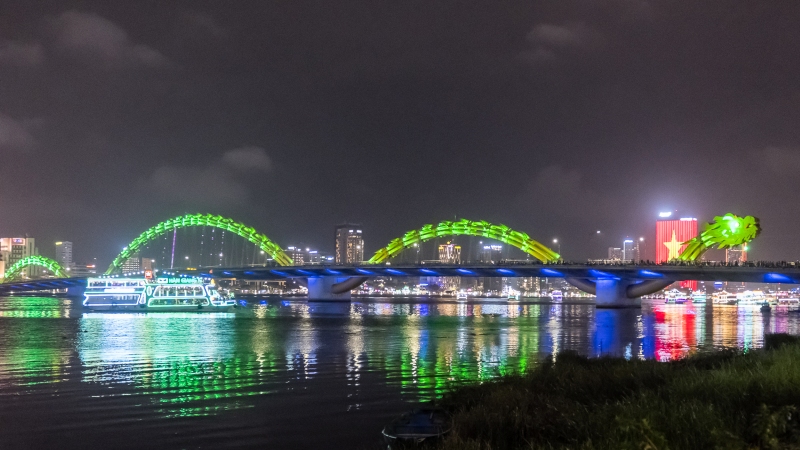
Guy: Sir, would you like a drink?
Me: Yes, a bottle of water.
Guy: How about a beer?
Me: How about a water.
Guy: I have a Coke.
Me: I want a water.
Guy: Is tea okay?
Me: No. You don’t have water?
Guy: No, sorry.
Just before the show starts you’ll notice tour boats start to pull near the bridge. There are a lot of tour boats taking in the show.
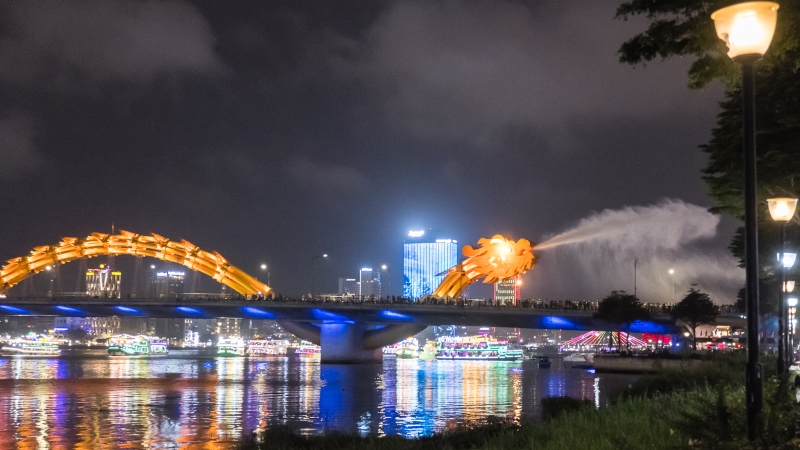
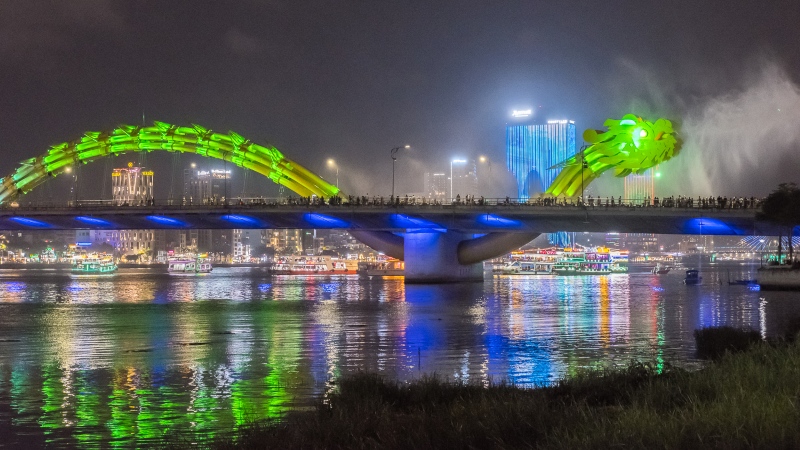
Actually the show was somewhat anticlimactic. Fire and water. Flamethrower and water cannon. Got it. The show went by so quickly I even got to drink half of Stephanie’s beer.
Da Nang Fine Arts Museum (Bảo tàng Mỹ thuật Đà Nẵng) is dedicated to showcasing and preserving art from the Highlands and Central Vietnam. Most of the works fall into the modern category.
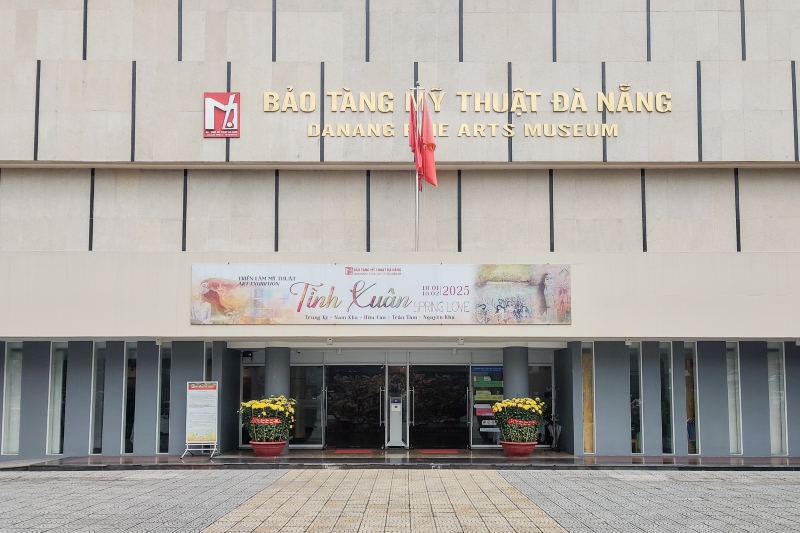
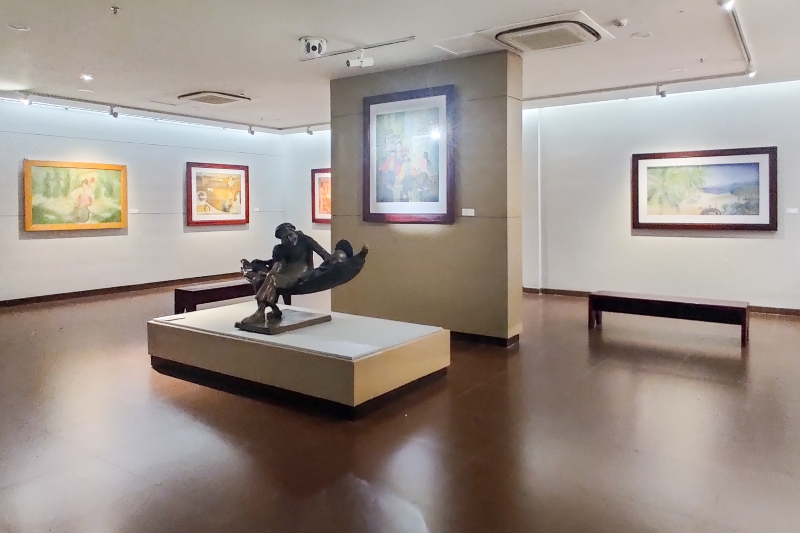
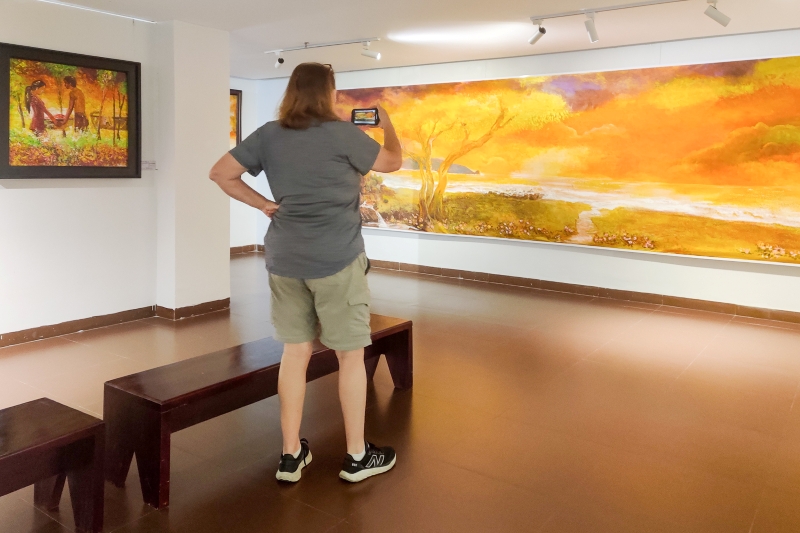
The first two floors are largely paintings with a few sculptures, including a small temporary exhibition space. The third floor is for folk art and other traditional handicrafts (masks, sculptures).
We did not know what to expect, but found the museum fairly interesting albeit small. Tickets cost only 20,000 ₫ each (about $0.80, which is basically negligible). We spent half an hour in the museum. While interesting, and filled mostly with paintings, it was not exactly to our taste. Nevertheless it is worth a visit.
GO! Đà Nẵng, a large grocery store 10 minutes from the art museum, was our second destination for the day. While the art museum only merited a 30 minute walk through, we spent over 60 minutes in the grocery store searching for about a dozen items (mostly American breakfast and lunch stuff). This was the first large grocery store we had seen in over a month.
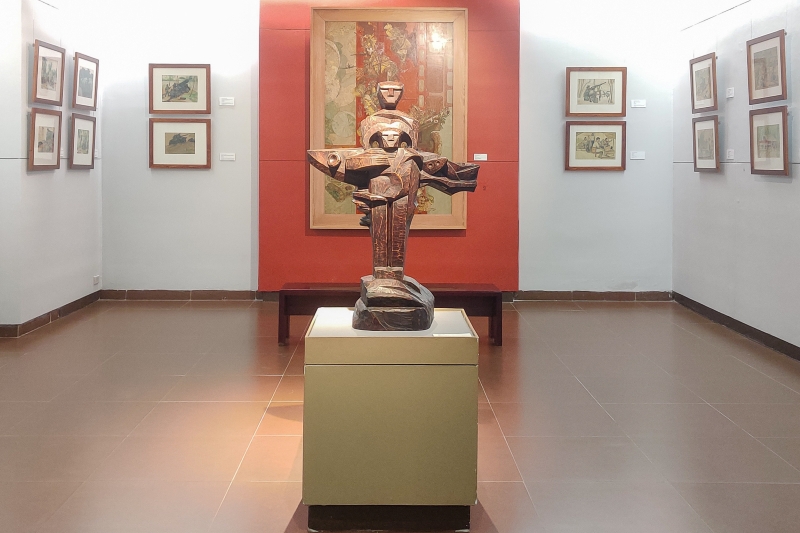
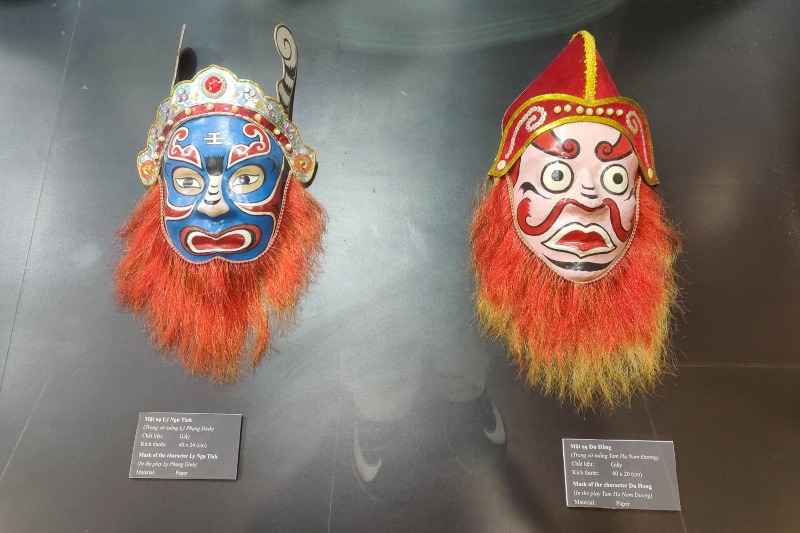
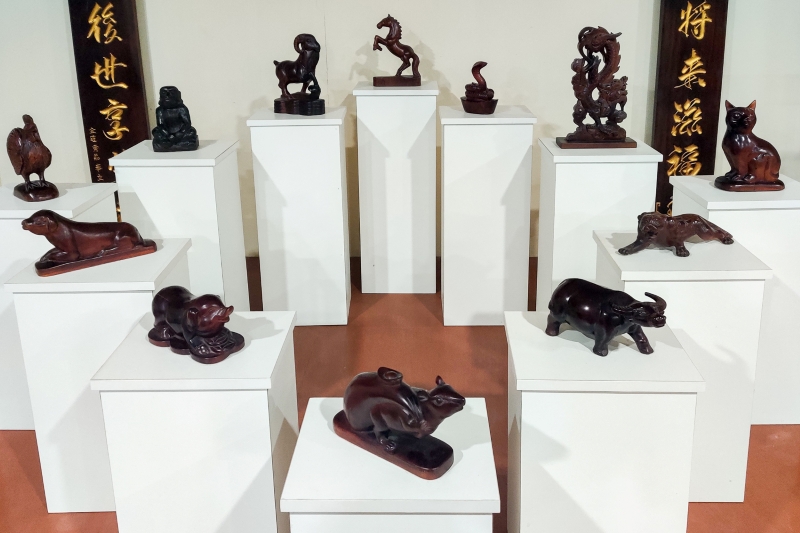
Having options when stocking a kitchen for a week is major excitement.
There is even a money exchange counter on the first floor which (if my math is correct) only charges a 2.5% fee, lower than the 3% surcharge added to the bill by the few restaurants that take credit cards.
Nearby Buddhist temples of note include Động Âm Phủ, a temple in a cave at the Marble Mountains just south of the city, and Lady Buddha on Sơn Trà Mountain (a large statue reminiscent of Big Buddha in Chiang Rai, Thailand).
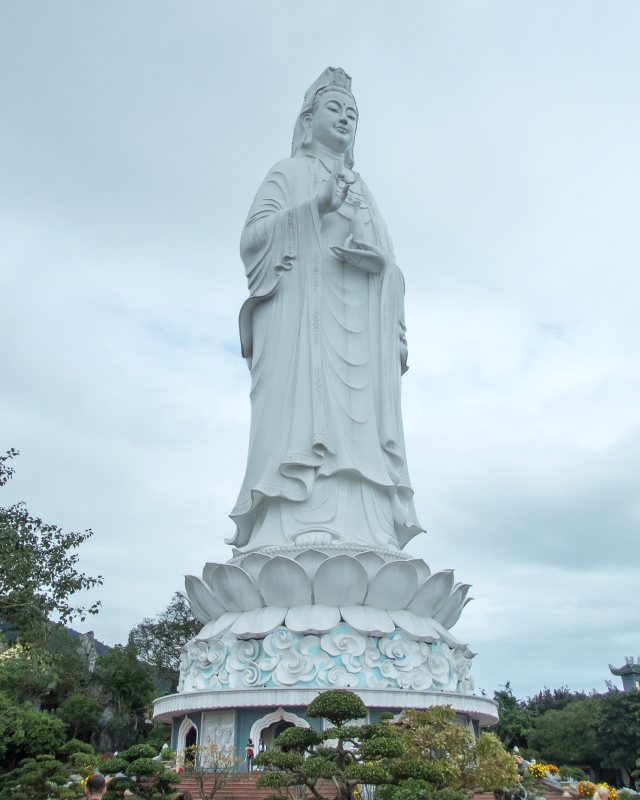
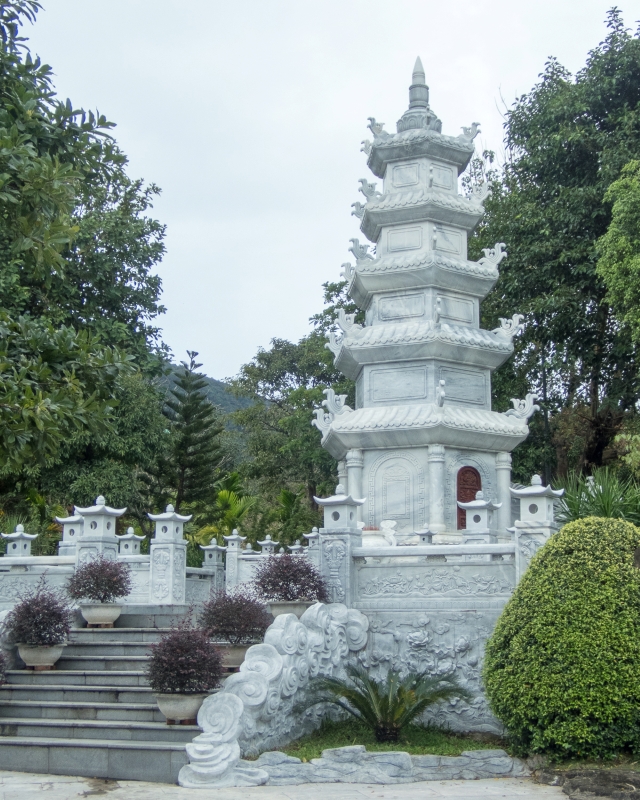
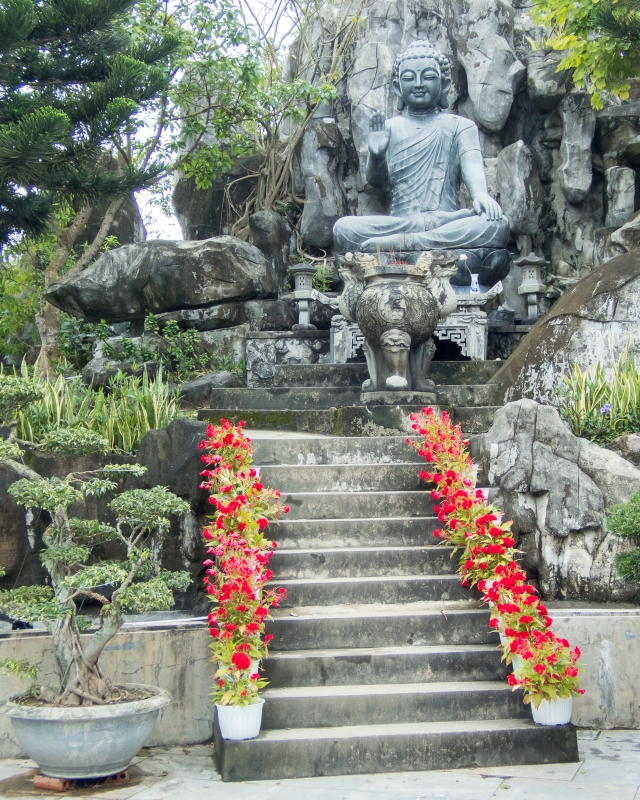
Despite being “templed out” we had a few hours of decent weather on our last day and ventured to Lady Buddha early in the afternoon. The Grab ride cost us $5 to get there. The driver happily waited an hour for us to explore the area before taking us back into town. That’s a win-win for everyone. We have a waiting car and the driver doesn’t have to drive 20 minutes back into town just to drive around looking for another fare.
The temple complex is free to enter. In addition to Lady Buddha, there are several smaller temples and pagodas. It’s an interesting and well-done site. The views of the Da Nang skyline alone were worth the trip.
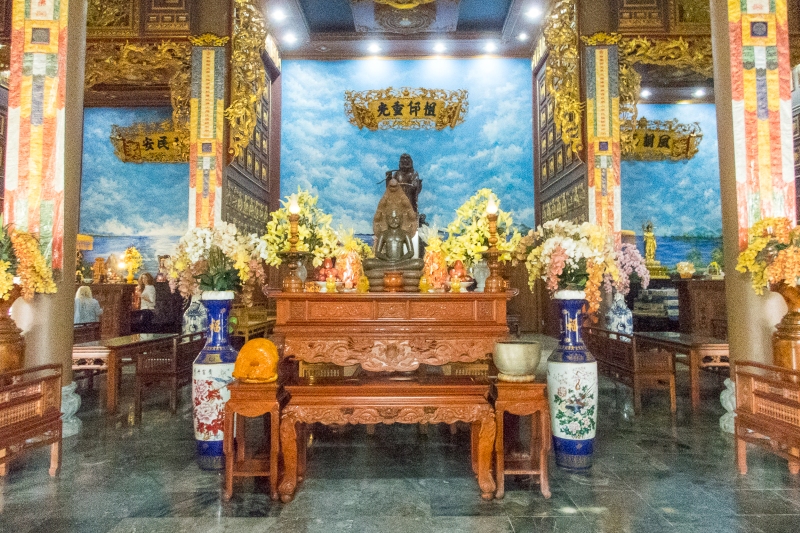
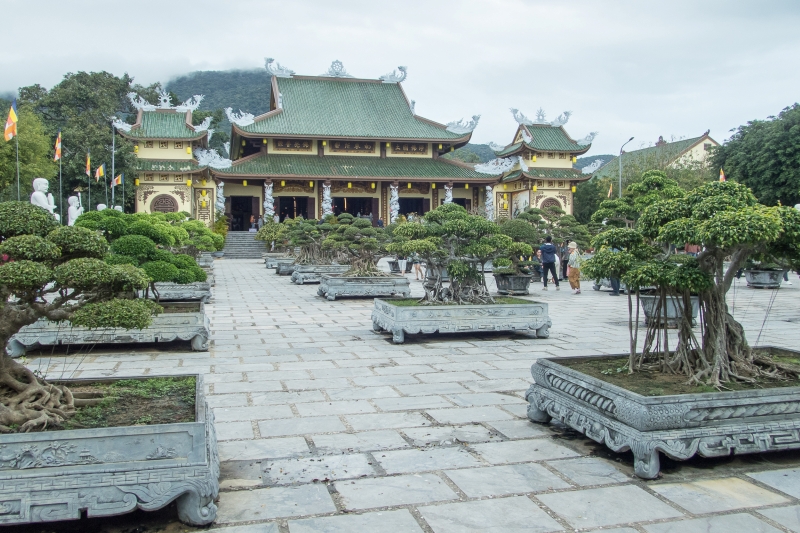
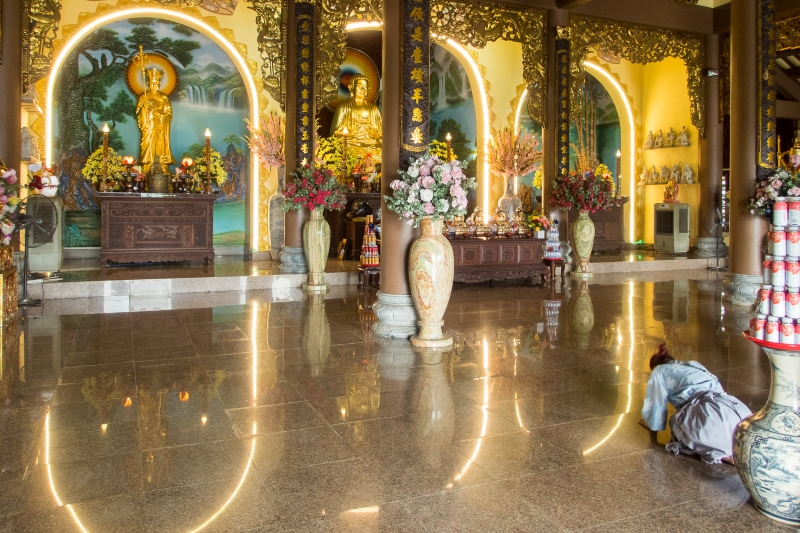
And there are monkeys. Quite a few signs warn folks not to feed the monkeys or get close to them. Apparently they like to snatch things and run off. Maybe it was the time of day, but we saw zero monkeys. We had friends go to Lady Buddha earlier the same day and they saw dozens of monkeys.
Ba Na Hills is perhaps the largest tourist destination in the area. It is one of several theme parks and resorts in Vietnam owned and operated by Vinpearl. Located outside of Da Nang, a cable car whisks tourists up into the mountains to the Golden Hands Bridge, a replica French village, and an indoor game zone. Stores, restaurants, and crowds. We didn’t go.
My Son Sanctuary (Di sản văn hoá Mỹ Sơn), a valley with over 70 Champa structures dating from the 4th to the 13th centuries, is more our speed. But it is an hour away, so we did not bother. (The Chăm are the original inhabitants of central Vietnam, later being conquered and annexed by the Vietnamese.)
It rained four out of the seven days we were in Da Nang, making it really easy to justify our decision to do basically nothing here.
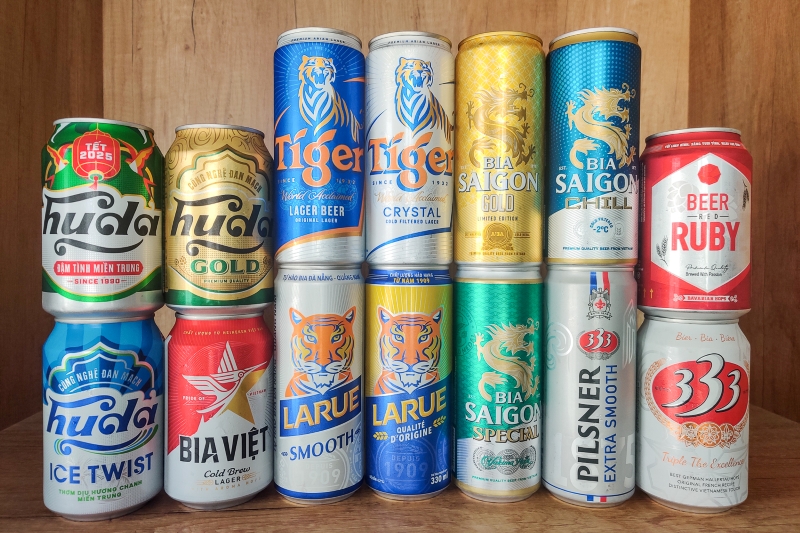
Rain even got us out of a day trip to Hội An, a popular, cutesy, Instagram, tourist type town just south of Da Nang. I’m sure it’s a nice place when hordes of tourists are not there. I just don’t know when that might be. When we told other travelers that we were skipping Hội An, they looked at us like we are crazy. I don’t think so.
Beer tasting commenced in earnest in Da Nang. A trip to the local convenience store got us 14 different beers from 7 different brewers to sample. This is the largest selection we’ve had to try since Vienna, Austria.
To date in Vietnam we have mostly consumed Tiger beer (a popular brand from Singapore). Along the way we have learned that Vietnam has a number of regional beers that are not necessarily easy to find elsewhere.
In Hanoi the local beers were Bia Hà Nội and Bia Việt, which are okay but not as good as Bia Saigon or Tiger. In Huế and Da Nang we came across Huda and Larue, respectively, neither of which we saw in Hanoi. It’s too bad because both are quite good.
After several evenings trying different beers, Huda (original) wins taste test hands down. It really wasn’t much of a contest.
Maybe we’ll find something new and different in Nha Trang, our next destination. At the very least I sure hope we can get Huda there. Some sustained sun would be nice, too.
Garrett and Stephanie
For additional posts about Vietnam, or elsewhere in the world, check out our Travel Blog. It contains collected links to all of our travel posts.
Want to subscribe (or unsubscribe) for email notification of new blog posts? It is only two to three emails a month. Send your name and email address to slowtravelchronicles@gmail.com, and note subscribe (or unsubscribe) in the subject line. All email addresses will be kept confidential and not sold to any third-party. You won’t get any marketing junk or sales pitches from us.
